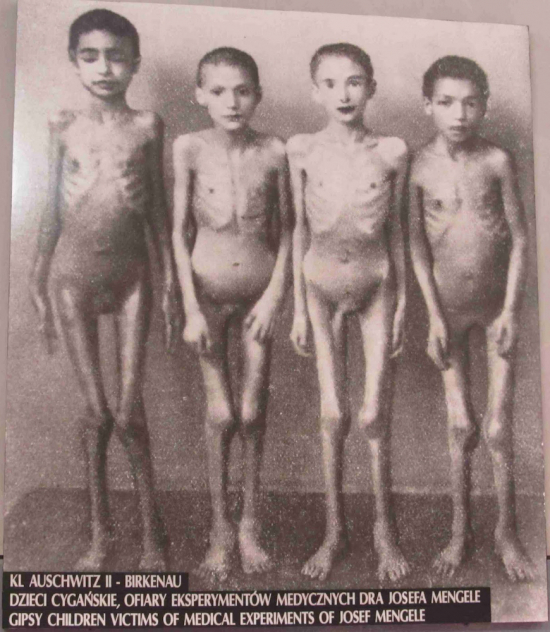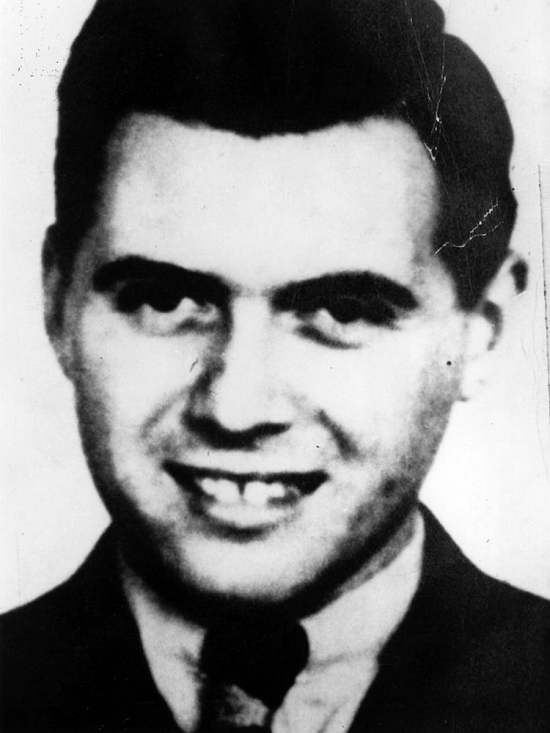The current era is not lacking in legends as one may think. The Dictionnaire des mythes d’aujourd’hui, edited by Pierre Brunel, includes, among others, contemporary myths of symbolic relevance: Che Guevara and cigarettes, extraterrestrials and Princess Diana, the Kennedys, Marilyn Monroe, Elvis Presley and DNA double helix. Some of these legendary figures have an antique flavour because, like all good myths, they reflect our condition: destiny, rise and fall, disregarded hopes, the sublime and the rottenness that are the opposite poles
of human nature.
They called him The White Angel because of his calm demeanour and his immaculate coat. His other nickname however was The Angel of Death for when he stopped being so civil and revealed all his cruelty and the inhuman hardness of his heart. In Auschwitz, every time a new train poured hundreds of terrified and suffering prisoners on the wide courtyard, Joseph Mengele was the one that, with a gesture of his hand, decided who was to be considered able to work and who was not supposed to spend a single night in the camp. As soon as they got off the train, three deportees out of four were sent directly to the gas chambers. But if among the hundreds of newcomers there happened to be a pair of twins, Mengele’s eyes suddenly brightened up. He had expressly ordered to spare each pair of homozygous twins and accommodate them in special “luxury” huts, where they would enjoy special privileges. At least until the physician’s experiments took a turn for the worse.
Mengele’s eugenic researches on twins were an attempt to understand whether it was possibile to select and reproduce the somatic features of the Aryan race. As soon as he arrived in Auschwitz, Mengele immediately understood how enormously lucky he was: he had the unique opportunity to carry out experiments on hundreds of human beings, regardless of any moral scruples and with no external interference. Therefore he tried to be as methodical as he could and to make the best of every working minute at the KZ.
Over time, a sinister halo of legend started to surround Mengele’s experiments in Birkenau: the survivors told about inoculations of terrible viruses, injections in the eyes in an attempt to change their colour, vivisections, children sewn together like Siamese twins, and summary executions by means of phenol, all carried out by the angel of death without the blink of an eye and with the firm conviction that he was writing the history of medicine.
The end of the war abruptly stopped the folly of this macabre scientific romance; forced to flee, Mengele took refuge in South America, where it was still possible to find some support and where a man like him could rebuild his life.
Shocking as it may seem, some of the documented results of the experiments carried out by the Nazis actually brought medical advances thanks to the remarkable lack of scruples and the context in which they were performed. Several Nazi physicians were enrolled as experts in the ranks of American scientists, under the agreement that their previous misdeeds would be deleted from their criminal records.
But Mengele was too extreme a symbol to be welcomed in America. The devilish doctor couldn’t hope to be forgiven and was condemned to live underground.
His son managed to meet him in secret two years before he died and said his father had become a tough, embittered, and yet stoical and remorseless old man, still firmly believing in what he had done.
But the legend of the angel of death doesn’t end with his passing away.
Cândido Godói is a village of six thousand souls, an inland division of Southern Brazil, very far away from the sea. This small village is well-known for a strange record: the highest birth rate of homozygous twins in the world. Many of these twins are blond and blue-eyed. Some of the older people in Cândido Godói love to tell stories about a German doctor that, during the Sixties, wandered around the village offering strange remedies and home visits to pregnant women...
Some reporters in search for a scoop and a writer inclined to reveries and self-proclaimed historian, were enough to let the headlines of the most important newspapers in the world read: “The Boys from Brazil have been found”. This appellation is taken from Ira Levin’s novel, The Boys from Brazil, that was adapted for the cinema in 1978. In the movie Lawrence Olivier discovers that Gregory Peck, an aged but not yet powerless Mengele, is planning to clone a hundred of new Hitlers: the so called “Boys from Brazil”, a group of twins artificially created using the Führer’s DNA.
Is it true that in Cândido Godói Mengele carried on his devilish experiments on twins even after his flight from Germany?
Of course not, since at that time he was holed up in a farm hundreds of miles away. You may wonder what incredible sci-fi knowledge
could have allowed him to induce twin birth by simply giving women a medicine. The high incidence of twins in Cândido Godói is probably
due to consanguineous unions and to the uniformity of the population, genetically isolated and of German descent (blond and blue-eyed children,
no wonder).
But the value of any legend lies in the symbol it implies: we need to believe in evil angels too, and the deeper and darker are the almost-supernatural shadows surrounding Mengele, the easier it is to confine him in the collective imagination, far from his real (and more frightful) existence as a man.



